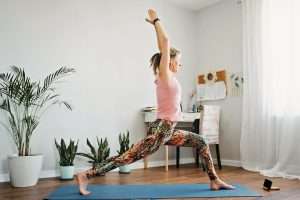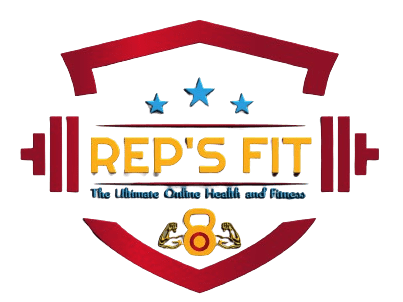Elevate Your Workout: A Guide to Modifying Programs for Better Fitness
Reaching new fitness levels isn’t just about working out harder—it’s about working out smarter. With the right modifications, you can transform any workout routine into a powerful tool that aligns with your goals, prevents injury, and maximizes your gains. Here’s a comprehensive guide to help you elevate your workout and reach new fitness heights.
1. Assess Your Current Fitness Level and Set SMART Goals
Before diving into modifications, take a moment to assess where you currently stand. Understanding your strengths and limitations helps you make meaningful changes. Establishing SMART goals—Specific, Measurable, Achievable, Relevant, and Time-bound—will guide your program modifications and keep you motivated.
Example: If your goal is to build upper body strength, try setting a SMART goal like, “Increase my bench press weight by 10 pounds in 2 months.” This provides a clear target and helps you track progress.
2. Adjust Intensity to Match Your Goals
The level of intensity in your workouts should align directly with your fitness objectives. Here’s how to adjust intensity for various goals:
For Strength: Increase the weights or resistance in your routine. Start with small increments, adding around 5-10% more weight weekly. Aim for fewer reps with heavier loads to build muscle strength.
For Endurance: Focus on lighter weights but higher repetitions and longer sets. Extend your cardio workouts or increase resistance to challenge endurance.
For Fat Loss: Try High-Intensity Interval Training (HIIT). Alternating short bursts of intense activity with rest periods not only burns calories but also boosts your metabolism.
Tip: Keep a log of your intensity levels to track how your stamina and strength improve over time.Few trends that will define the future of your body fitness.
3. Diversify Your Exercise Selection for Full-Body Fitness
Over time, sticking to the same exercises can cause fitness plateaus and muscle imbalances. Diversifying your workouts keeps things interesting and ensures that all muscle groups get attention.
Exercises to Add:
- Upper Body: Replace standard push-ups with variations like incline, decline, or explosive push-ups to target different muscle fibers.
- Lower Body: Swap out regular squats for Bulgarian split squats or add deadlifts to work multiple muscle groups and build a strong lower body.
- Core: Switch crunches with planks or Russian twists for dynamic core activation and increased stability.
Pro Tip: Add new exercises every 4-6 weeks to keep challenging your muscles and prevent adaptation.
4. Fine-Tune Your Form and Tempo for Better Muscle Engagement
Form and tempo are critical factors in muscle engagement. Performing exercises slowly and with control maximizes the time your muscles are under tension, resulting in more significant strength and endurance gains.
Ways to Improve Form and Tempo:
- Use Slow, Controlled Movements: Slow down each rep, especially on the eccentric (lowering) phase. For example, take 3 seconds to lower into a squat and 1 second to rise.
- Practice Proper Alignment: Ensure your joints and muscles are aligned correctly to avoid injuries and engage the target muscles fully.
- Add Pauses: Pausing at the peak of each movement—like holding a squat at its lowest point—intensifies the workout, promoting muscle strength.
Tip: Practice exercises in front of a mirror or work with a trainer to perfect your form.
5. Incorporate Functional Training for Real-Life Strength
Functional training is key to achieving a balanced body that not only looks fit but also performs well in daily activities. These movements, which mimic real-life tasks, improve core stability, balance, and coordination.
Effective Functional Exercises:
- Kettlebell Swings: Builds explosive power in your hips and legs.
- Medicine Ball Slams: Improves power, stamina, and core strength.
- Farmers Walk: Develops grip strength, core stability, and endurance.
How to Use Functional Training: Add functional exercises at the end of your workout as a “finisher” for added conditioning or incorporate them on designated functional training days for a complete session.
6. Monitor Progress and Make Adjustments Every Few Weeks
As you work towards your fitness goals, track your progress to stay motivated and identify areas that need modification. Every few weeks, assess your achievements and challenges to decide if it’s time to make changes.
Signs It’s Time to Modify Your Routine:
- Progress Has Plateaued: If you’re no longer seeing results, it’s time to increase weights, reps, or add a new exercise variation.
- Pain or Discomfort: Experiencing pain may indicate improper form or an overuse injury. Take a step back, check your form, and consider lower-impact options.
- Mental Burnout: Bored with your routine? Shake things up with new exercises or a change of environment—try an outdoor workout or a group class.
Tracking Tools: Use a fitness app or journal to log weights, reps, cardio times, and notes on how you feel after each session.
Conclusion: Transform Your Fitness Journey with REP’s Fit
Enhancing your fitness journey doesn’t mean starting over—it’s about making mindful adjustments that bring you closer to your goals. At REP’s Fit, we’re here to support you every step of the way. With expert trainers, cutting-edge equipment, and customized programs, we offer everything you need to keep progressing.
Whether you’re seeking personalized guidance or looking to switch up your routine, REP’s Fit has the expertise and community to help you achieve your best. Elevate your workout and transform your fitness journey with us—one step at a time.

![]()




0 Comments
The Common category includes then following block: Paragraph, image, heading, latest gallery, quote, audio, cover, video. The paragraphs block is the default block type. This is should not have any alignment of any kind. Category and then there are many things to following blocks and many more.
The Common category includes then following block: Paragraph, image, heading, latest gallery, quote, audio, cover, video. The paragraphs block is the default block type. This is should not have any alignment of any kind.
The Common category includes then following block: Paragraph, image, heading, latest gallery, quote, audio, cover, video. The paragraphs block is the default block type. This is should not have any alignment of any kind. Category and then there are many things too following blocks and many more.